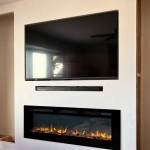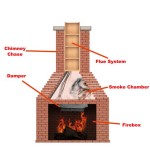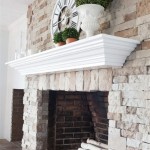Masonry Fireplace Doors with Blower: Enhancing Efficiency and Aesthetics
Masonry fireplaces, traditional features in many homes, offer a unique ambiance and a source of warmth. However, their open design can lead to significant heat loss when not in use. Traditional fireplaces are notoriously inefficient, losing up to 90% of the heat up the chimney. The addition of fireplace doors can substantially improve efficiency, while simultaneously enhancing the visual appeal of the fireplace. Integrating a blower system into masonry fireplace doors takes this efficiency a step further, actively circulating heated air into the room.
This article explores the benefits of masonry fireplace doors equipped with blowers, delving into their functionality, types, installation considerations, and maintenance requirements. It aims to provide homeowners with a comprehensive understanding of how these systems can improve the performance and enjoyment of their masonry fireplaces.
Understanding the Functionality of Fireplace Doors with Blowers
Traditional masonry fireplaces rely on radiant heat to warm the surrounding area. While this provides a certain level of comfort, much of the generated heat escapes through the chimney due to natural convection. Fireplace doors, by creating a barrier, significantly reduce this heat loss. They prevent drafts from entering the home through the chimney and mitigate the escape of heated air.
A blower system further enhances this functionality. The blower, typically located beneath or behind the firebox, draws cool air from the room and circulates it around the firebox. As the air passes around the heated metal of the firebox, it is warmed. The blower then forces this heated air back into the room, increasing the overall convective heat output. This forced convection allows for a more even distribution of heat throughout the room, addressing the common issue of traditional fireplaces creating hot spots directly in front of the hearth while leaving other areas relatively cold.
The effectiveness of a blower is directly related to its size and the design of the fireplace door and firebox. A larger blower will move more air, resulting in a greater volume of heated air circulated into the room. The design of the fireplace door, specifically the vents and air passages, dictates how efficiently the air is drawn in and expelled. The firebox construction also plays a role, as thicker masonry or the presence of a metal liner can affect the amount of heat transferred to the circulating air.
Types of Masonry Fireplace Doors with Blower Systems
Fireplace doors for masonry fireplaces are available in a wide range of styles, materials, and configurations. The blower systems integrated with these doors are equally diverse, offering various levels of performance and features.
Based on Door Style:
Overlapping Doors: These doors overlap the fireplace opening, offering a tight seal and preventing smoke from escaping into the room. They are a popular choice for their ease of installation and effective draft control.
Inside Fit Doors: Designed to fit flush with the fireplace opening, these doors offer a more seamless and integrated look. They require precise measurements and installation to ensure a proper seal.
Bi-Fold Doors: Folding inward, these doors provide unobstructed access to the fire. They are often preferred for their convenience and aesthetic appeal.
Single Panel Doors: A single pane of glass provides a clean and modern look. They offer a wide flame view but may not be as effective at preventing drafts as overlapping doors.
Based on Blower Type and Performance:
Standard Blowers: These blowers provide a consistent airflow at a fixed speed. They are typically less expensive and simpler to operate.
Variable Speed Blowers: Allowing the user to adjust the airflow, these blowers offer greater control over the heat output. They are ideal for adapting to varying weather conditions and heating needs.
Thermostatically Controlled Blowers: These blowers automatically adjust their speed based on the temperature of the firebox. They provide hands-free operation and maintain a consistent temperature in the room.
High-Capacity Blowers: Designed for larger fireplaces, these blowers move a greater volume of air, providing maximum heat output. They are suitable for heating larger rooms or open floor plans.
Material Considerations:
The materials used in the construction of the fireplace doors and blower housing are crucial for durability and performance. Common materials include:
Steel: A durable and cost-effective option, steel is often used for the frame and blower housing. Powder coating can enhance its resistance to rust and corrosion.
Cast Iron: Known for its excellent heat retention and durability, cast iron is often used for the firebox and heat exchangers.
Glass: Tempered glass is used for the door panels, providing a clear view of the fire while withstanding high temperatures. Ceramic glass is also available, offering superior heat resistance and clarity.
Installation and Maintenance Considerations
Proper installation is crucial for the safe and efficient operation of fireplace doors with blowers. Incorrect installation can lead to reduced performance, safety hazards, and potential damage to the fireplace.
Installation:
Measurements: Accurate measurements of the fireplace opening are essential for selecting the correct size of fireplace doors. Measure the width, height, and depth of the opening, and consult the manufacturer's specifications for the appropriate door size.
Electrical Connection: The blower requires a dedicated electrical outlet. Consult a qualified electrician to ensure that the outlet is properly grounded and meets the power requirements of the blower.
Sealing: A proper seal between the fireplace doors and the fireplace opening is vital for preventing drafts and smoke leakage. Use high-temperature silicone caulk to seal any gaps or cracks.
Professional Installation: While some homeowners may attempt to install fireplace doors themselves, professional installation is recommended to ensure proper fit, sealing, and electrical connections. A qualified installer can also identify and address any potential issues with the fireplace itself.
Maintenance:
Cleaning: Regularly clean the glass panels of the fireplace doors with a non-abrasive glass cleaner. Remove any soot or creosote buildup to maintain a clear view of the fire.
Blower Maintenance: Periodically clean the blower fan and vents to remove dust and debris. This will ensure optimal airflow and prevent overheating. Some blower systems have removable filters that should be cleaned or replaced regularly.
Inspections: Inspect the fireplace doors and blower system annually for any signs of damage or wear. Check the seals, hinges, and electrical connections. Address any issues promptly to prevent further damage or safety hazards.
Chimney Sweeping: Regular chimney sweeping is essential for maintaining the safe and efficient operation of any fireplace. Creosote buildup in the chimney can create a fire hazard. The National Fire Protection Association (NFPA) recommends annual chimney inspections and cleaning as needed.
Safety Considerations:
Clearance to Combustibles: Maintain adequate clearance between the fireplace doors and any combustible materials, such as furniture or curtains. Consult the manufacturer's specifications for the recommended clearance distance.
Supervision: Never leave a fire unattended, especially when children or pets are present.
Smoke Detectors and Carbon Monoxide Detectors: Ensure that smoke detectors and carbon monoxide detectors are properly installed and functioning in the home. These detectors can provide early warning of fire or carbon monoxide poisoning.
By understanding the functionality, types, installation considerations, and maintenance requirements of masonry fireplace doors with blowers, homeowners can make informed decisions about enhancing the efficiency and aesthetics of their fireplaces while ensuring safety and longevity.
The selection of appropriate fireplace doors with blowers depends heavily on the individual circumstances of the home. Considerations such as fireplace dimensions, aesthetic preferences, budgetary constraints, and the homeowner's technical aptitude all contribute to the decision-making process. Seeking the advice of a qualified professional can be invaluable in determining the optimal solution for a given situation.
Furthermore, adherence to local building codes and regulations is essential when installing or modifying a fireplace. These codes often address issues such as chimney height, clearances to combustibles, and electrical requirements. Compliance with these regulations ensures the safety and legality of the installation.
The ongoing care and maintenance of fireplace doors and blower systems are crucial for preserving their efficiency and extending their lifespan. Regular cleaning, inspections, and prompt repairs will help to prevent problems and ensure that the fireplace continues to provide warmth and enjoyment for years to come.

Premier View Masonry Fireplace Door Woodland Direct

Fremont Masonry Glass Fireplace Door In Vintage Iron Made To Order

Grandseal Praire Style Masonry Fireplace Door With Ceramic Glass

Masonry Fireplace Door Legend Elite Inside Fit Only

Fireplace Door Guide Stoll Industries

Grate Heater With Masonry Fireplace Doors Customized

Zero Clearance Vs Prefabricated Fireplace Full Service Chimney

Ardmore Flat Black Masonry Fireplace Glass Doors

Finley Wood Burning Fireplace Glass Door In Flat Black

Why Should I Get A Glass Fireplace Door Installed On My
Related Posts








